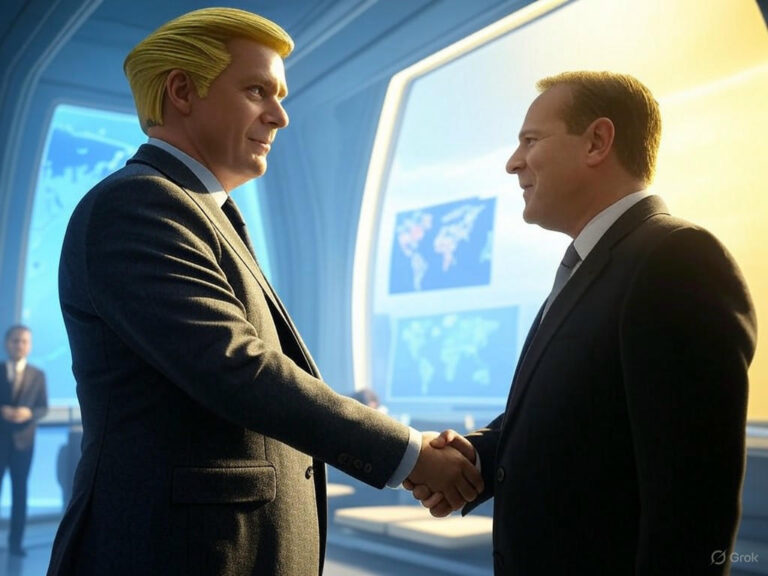
Trump’s Movie Tariffs: Hollywood’s Confusion, Dread, and Hope
Introduction
The recent proposal for a 100 percent tariff on international film imports by President Donald Trump has thrown Hollywood into disarray. Industry leaders in California are navigating a whirlwind of uncertainty, questioning how these Trump film tariffs could reshape American cinema and its ties to global markets. It’s a moment of high stakes, where confusion reigns, but so does a cautious hope for constructive change.
Understanding the Trump Film Tariffs Proposal
At the heart of this debate is President Trump’s plan to impose heavy restrictions on foreign films entering the U.S., drawing from advice by figures like Jon Voight. The goal? To bolster American economic strength by curbing what Trump sees as unfair competition from abroad. Yet, with scant details on implementation, these Trump film tariffs are breeding more questions than answers among studio heads and policymakers.
- A full 100 percent tariff on imported films, as announced by Trump
- Lack of a clear rollout plan, leaving California officials in the lurch
- Immediate scrambling by Hollywood unions and executives for clarity on U.S. movie industry impacts
Have you ever wondered how a single policy could upend an entire industry? In this case, Trump film tariffs might do just that, forcing filmmakers to rethink global partnerships and production strategies.
Hollywood’s Initial Reaction: A Blend of Confusion and Concern
Hollywood’s first response to the Trump film tariffs has been one of sheer perplexity, not outright defiance. Governor Gavin Newsom captured this sentiment, saying, “If the President provides more specifics, we’ll take it seriously.” Meanwhile, Congresswoman Laura Friedman, with her background as a film producer, raised practical doubts: How do you even apply tariffs to something as intangible as a movie?
Key Stakeholder Responses to Trump Film Tariffs
- The Motion Picture Association highlighted a $153 billion trade surplus for the U.S. movie industry in 2023, sidestepping direct comment on the tariffs
- California leaders argue that the sector, already hit by economic challenges, needs solutions, not more confusion from Trump film tariffs
- Labor unions are voicing fears about job losses and disrupted funding, painting a vivid picture of potential fallout
Imagine a blockbuster shoot grinding to a halt because of sudden trade barriers—it’s a scenario that’s making everyone in Tinseltown uneasy. Friedman advocates for alternatives like a national tax credit, which could support domestic films without the drama of Trump film tariffs.
Economic Stakes: Hollywood’s Global Reach and Trade Dynamics
Beyond the glitz, Hollywood drives billions in the global economy, maintaining a strong trade surplus that underscores the U.S. movie industry’s dominance. These Trump film tariffs could threaten that balance, echoing past failed attempts, like the 2007 push against Canadian subsidies.
| Year | U.S. Film/TV Trade Surplus | Major Markets |
|---|---|---|
| 2023 | $153 billion | Global |
| 2020-2022 | $120-140 billion | Global |
Source: Motion Picture Association Economic Impact Report
What if these tariffs backfire, cutting off access to international audiences? It’s a real risk, as history shows that protectionist moves often complicate things for creative industries like film.
Historical Context: Tariffs on Cultural Goods
Tariffs have long been used for physical exports, but applying them to intellectual property like films is uncharted territory. Trump’s film tariffs highlight this mismatch—films aren’t widgets; they’re collaborative art forms shaped by cross-border creativity. Think about how events like the Cannes Film Festival rely on global input; a tariff could shatter those connections.
Historically, efforts to regulate cultural imports have fizzled out due to enforcement issues. For instance, past U.S. complaints about foreign subsidies didn’t gain much traction, reminding us that Trump film tariffs might face similar hurdles.
Global Repercussions: Reactions to Trump’s Film Tariffs
The ripple effects of Trump film tariffs extend far beyond U.S. borders, potentially sparking diplomatic tensions. European officials, such as Laurence Farreng from the European Parliament, warn that Americans could end up paying the price through retaliation.
- Foreign markets might impose their own quotas, limiting U.S. films’ reach
- This could dampen cultural exchanges at festivals and hinder co-productions
- Studios may feel pressured to keep everything stateside, reshaping the U.S. movie industry’s global strategy
Picture a world where your favorite international film never makes it to American screens— that’s the kind of scenario Trump’s film tariffs could create, prompting industry pros to seek diplomatic fixes.
The Politics of Populism and Economic Nationalism
Trump’s push for these tariffs taps into populist frustrations, framing the U.S. movie industry as a symbol of elite interests versus everyday workers. It’s a narrative that resonates with those feeling sidelined by globalization, even if the economics tell a more layered story.
But is this really about protecting jobs, or is it a broader play for voter support? As we see with Trump film tariffs, politics and culture often collide, leaving Hollywood to navigate the fallout.
Unanswered Questions: Enforcing Trump Film Tariffs
One of the biggest puzzles is how to actually implement these tariffs. Films are digital and often multinational, so how do you measure and collect fees based on location or funding? Experts worry that vague rules could lead to legal battles or even boost piracy, undermining the U.S. movie industry’s goals.
For example, would a film shot partially overseas qualify? These gray areas in Trump film tariffs could create chaos, forcing creators to adapt in ways that might stifle innovation.
Hollywood’s Hope: Strategies Amid Tariff Uncertainty
Amid the dread, there’s a silver lining—Hollywood is rallying for smarter alternatives. Pushing for enhanced federal tax credits could incentivize local production without the isolationist vibe of Trump film tariffs. It’s about fostering growth through collaboration, not barriers.
- Advocates are calling for tax incentives to boost domestic filmmaking
- State and federal teams could work together to support indie creators
- Maintaining global leadership means prioritizing open markets over restrictive Trump film tariffs
If you’re a filmmaker, consider lobbying for these changes—it’s a proactive step that could turn uncertainty into opportunity. What strategies are you using to navigate these shifts?
Conclusion: The Future of Film in a Tariff World
As Hollywood grapples with Trump film tariffs, the industry stands at a pivotal juncture between protectionism and worldwide collaboration. This could be a chance to redefine U.S. movie industry policies for the better, emphasizing innovation over isolation.
What are your thoughts on how these tariffs might play out? Share your insights in the comments, spread this article to fellow film enthusiasts, or check out our related posts on entertainment economics for more. Let’s keep the conversation going.
References
- POLITICO. “Trump’s Film Tariff Confuses Hollywood.” Link
- Astral Codex Ten. “A Modest Proposal For Republicans: Use The Word ‘Class’.” Link
- John August. “Scriptnotes: Industry Economics.” Link
- FTSG. “Economic Impact Report.” Link
- VoiceOverXtra. “Terms of Use.” Link
- DeepTarget. “Marketing Musings.” Link
- University of Connecticut. “Compiled News Research.” Link




